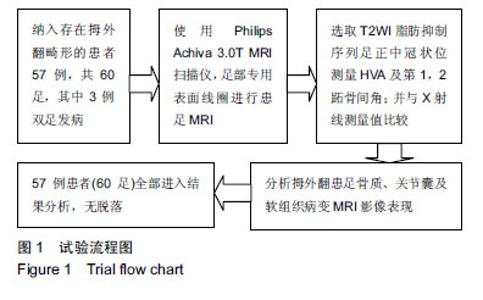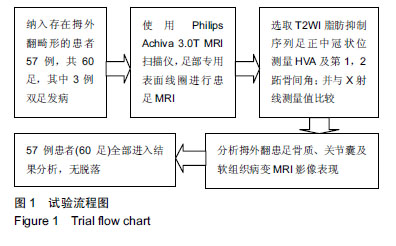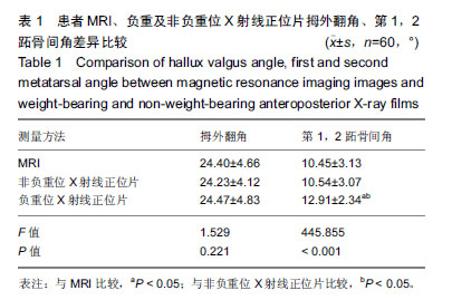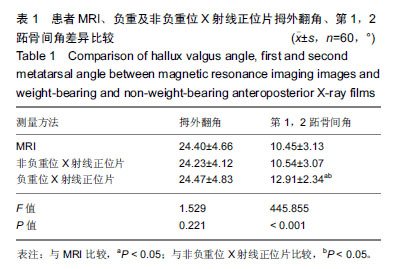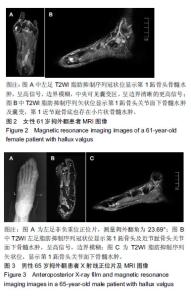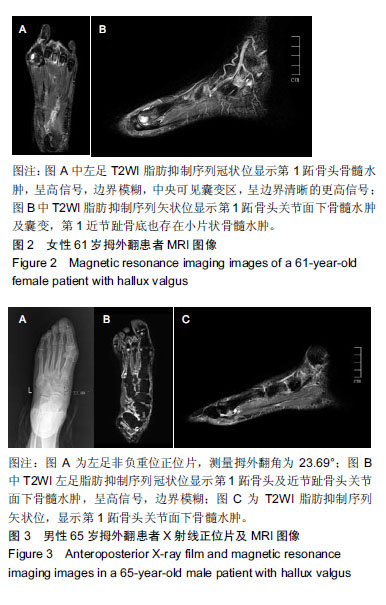| [1]胡婷.坡跟护士鞋与足拇外翻的相关性研究[J].当代护士, 2013, 20(10):3-4.[2]陈学武,杨评山.Akin截骨联合第1跖骨基底楔形植骨治疗中重度足拇外翻临床疗效研究[J].医学研究杂志,2014,43(5):62-64.[3]温建民.拇外翻诊断与治疗方法选择的探讨[J].中国骨伤, 2018, 31(3):199-201.[4]Kilmartin TE,O’Kane C.Combined rotation scarf and Akin osteotomies for hallux valgu A patient focused 9 year follow up of 50 patients.J Foot Ankle Res.2010;3:2-14.[5]Choi GW,Kim HJ,Kim TS,et al.Comparison of the modified mcbride procedure and the distal Chevron osteotomy for mild tomoderate hallux valgus.J Foot Ankle Surg. 2016;55(4): 808-811.[6]Bernstein M,Reidler J,Fragomen A,et al. Ankle distraction arthroplasty:indications,technique,and outcomes. J Am Acad Orthop Surg. 2017;25(2):89-99.[7]Palmanovich E,Myerson MS.Correction of moderate and severe hallux valgus deformity witha distal metatarsal osteotomy using anintramedullary plate. Foot Ankle Clin. 2014;19(2):191-201.[8]Fakoor M, Sarafan N, Mohammadhoseini P, et al. Comparison of clinical outcomes of scarf and chevron osteotomies and the McBride procedure in the treatment of hallux valgus deformity. Arch Bone Jt Surg. 2014; 2(1): 31-36. [9]Couqhlin MJ. Roger A Mann Award Juvenile hallux valgus etiology and treatment. Foot Ankle Int.1995;16(11):682-697. [10]邢国丽,冯建书,姚力.拇外翻微创手术的围手术期康复护理[J].河北医药,2013,35(16):2544-2545.[11]付德林,沙汹涛,田艳丽,等.第一跖骨近端斜楔形截骨联合软组织手术治疗重度拇外翻[J].中国美容医学,2012,21(2):186-187.[12]杨评山,陈学武,潘光杰.足拇外翻危险因素的病例对照研究[J].中国现代医生,2013,51(19):29-31.[13]穆桂玲.微创截骨治疗与护理拇外翻合并小趾内翻[J].湖北中医杂志,2012,34(6):47-48.[14]李静,谢鸣,勘武生,等.微创截骨治疗拇外翻合并小趾内翻的临床疗效观察[J].中国骨与关节损伤杂志,2011,26(8):755-756.[15]袁育虎.拇收肌切断术联合Chevron截骨术治疗拇外翻畸形的临床应用[J].中国实用医药,2010,5(28):48.[16]Zhang FQ,Wang HJ,Zhang Q,et al.Hallux valgus deformity treated with the extensor hallucis longus tendon transfer by dynamic correction.Chin Med J(Engl). 2010;123(21): 3034-3039.[17]祝玉芬,杜昱平,张卫平.磁共振成像在肌肉骨骼系统的应用进展[J].人民军医,2005,48(9):544-546.[18]龚浩,桑志成,温建民,等.拇趾外翻足负重位和非负重位下X线测量指标与跖骨头下疼痛的相关性分析[J].中国骨伤, 2014,27(4): 303-307 .[19]戴鹤玲,温建民,孙天胜.拇外翻负重位与非负重位影像学法分析[J].中国骨与关节损伤杂志,2010,26(10):897-898.[20]黄萍,钱念东,齐进,等.拇外翻发病危险因素与足底压力特征[J].中国组织工程研究,2016,20(42):6351-6356.[21]Ho B,Baumhauer J.Hallux rigidus. Efort Open Rev.2017;2(1): 13-20. [22]Dhinsa B,Walker R,Jones I.Technique to test flexor hallucis longus after Akin osteotomy. Ann R Coll Surg Engl. 2016; 98(2):156. |
